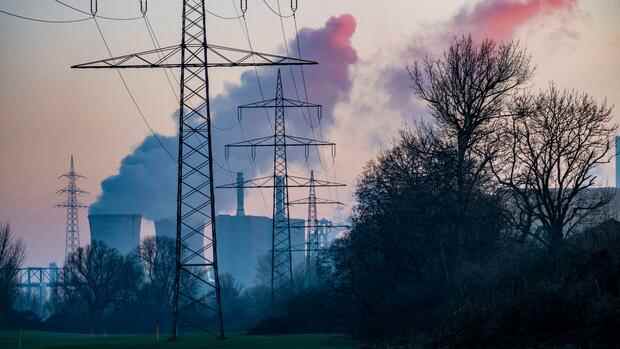In recent years, the supplier has transformed itself from a nuclear and coal company into one of the largest green electricity producers in Europe.
(Photo: imago images/Jochen Tack)
Dusseldorf The utility RWE has benefited from good business in energy trading. The company announced on Wednesday that the water/biomass/gas segment also performed better than expected.
According to preliminary figures, adjusted operating profit (EBIT) for the past year was just under EUR 2.2 billion, above the target of EUR 1.5 to 1.9 billion that it had set itself. The bottom line is that RWE also earned more than expected at almost 1.6 billion euros. The RWE share responded with a significant jump in price and was up 3.8 percent on Wednesday afternoon.
The good numbers are likely to be mainly due to the massive increase in the cost of coal, gas and electricity. The price of natural gas alone has more than quadrupled within a year. The business with fossil fuels is still lucrative for RWE, but the change from the former coal giant to one of the largest providers of green electricity in Europe is already in full swing. With the help of an investment offensive worth billions, RWE wants to expand its green capacities from the current 25 to 50 gigawatts by 2030.
The company has already filled almost half of the planned expansion with projects for wind farms in the coming years. In the offshore sector in particular, RWE has recently gained a lot in Great Britain.
Top jobs of the day
Find the best jobs now and
be notified by email.
In this way, the Essen-based company, headed by CEO Markus Krebber, wants to make the change in the energy world, from a fossil to a sustainable power supply, a profit maker. By the end of the decade, the profit from the new core business should double compared to 2021 to up to five billion euros.
RWE’s about-face is not voluntary
RWE could do this thanks to a swap deal with competitor Eon in early 2018. While Eon took over the grid and sales divisions from the RWE subsidiary Innogy, RWE received Innogy’s renewable energy business and Eon’s in return. Since autumn 2019, when the deal was sealed, RWE has officially been one of the largest producers of renewable energies in Europe.
However, the turnaround is anything but voluntary. However, the decision to phase out coal and ambitious climate targets from Berlin and Brussels also leave little room for alternatives. However, RWE is still only at the beginning of its restructuring. CO2 emissions have been falling for years, by 19.2 million tons in 2020 alone. However, they are still extremely high at 68.9 million tons.
In order to change that, 2.5 gigawatts of wind, solar and storage per year are now to be added to the portfolio. So far, only an expansion of 1.5 gigawatts per year was planned. That would be an increase of a good 70 percent. This also includes two gigawatts of electrolysis capacity for green hydrogen over the next eight years.
The gas-fired power plants in particular should play an important role in this. With the prospect of eventually switching to green hydrogen, Krebber does not rule out the construction of new gas-fired power plants. With around 14 gigawatts of installed capacity, RWE currently owns the second largest fleet of gas-fired power plants in Europe. Further systems with a total capacity of at least two gigawatts are to be added by 2030.
With agency material
More: Billions invested in the sea: Floating wind power plants are about to make a breakthrough

